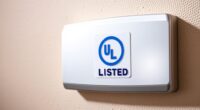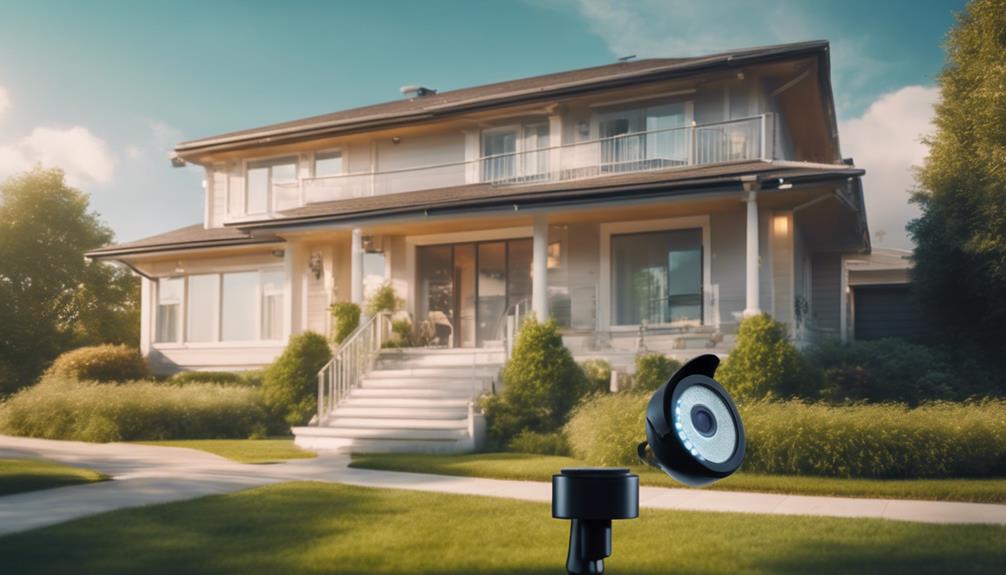To guarantee faster emergency response, you need to integrate E-911 services into your VoIP system properly. This involves verifying location accuracy, using advanced tracking technologies, and coordinating with your provider and local emergency authorities. Regular testing and updates are essential to keep caller information current and reliable. Proper setup minimizes delays and helps responders locate callers quickly when it matters most. Keep exploring to learn how to optimize your E-911 integration for maximum safety.
Key Takeaways
- Ensure VoIP systems are configured with accurate, up-to-date location data using advanced location tracking technologies.
- Regularly verify and test E-911 functionality to confirm proper call routing and precise caller location transmission.
- Coordinate with VoIP providers and emergency services to meet local E-911 requirements and compliance standards.
- Implement real-time location updates to maintain caller position accuracy during calls and infrastructure changes.
- Integrate fallback procedures and redundant systems to ensure emergency response times are minimized during outages or disruptions.

Integrating E-911 services is essential for ensuring rapid emergency response in today’s digital age. As more organizations adopt VoIP communication systems, it’s crucial to understand how VoIP integration impacts emergency services. Unlike traditional phone lines, VoIP relies on internet connections, which can make locating callers more challenging. That’s why enhancing location accuracy becomes a top priority. When you integrate E-911 with VoIP, you need to ensure that the system can pinpoint the caller’s exact location quickly and reliably. This means implementing advanced location tracking technology that updates caller data in real time, enabling emergency responders to reach you without delay.
Without proper VoIP integration, emergency services may struggle to identify your location, especially if your business moves or if your network is set up across multiple sites. Location accuracy is vital because it directly affects response times. When someone dials 911 over VoIP, the system must automatically transmit precise location information—like building number, floor, and room—so responders aren’t left searching or risking delays. This requires integrating geolocation capabilities and ensuring that your VoIP provider supports automatic location updates, which can be achieved through protocols like ALI (Automatic Location Identification).
You should also verify that your VoIP setup is compatible with your local E-911 requirements. Some providers offer built-in solutions for improved location accuracy, but it’s your responsibility to confirm these are configured correctly. Regular testing is essential to guarantee that the location data transmitted during emergencies is accurate and current. As part of your integration efforts, you’ll need to coordinate with your VoIP provider and emergency services to establish protocols for updating location information when your infrastructure changes, such as moving phones or expanding your network.
Furthermore, seamless VoIP integration with E-911 services minimizes the risk of misrouted emergency calls or delayed responses. When your system is properly configured, emergency responders receive not only your call but also detailed location data, which speeds up response times. This integration also means that during network outages or disruptions, fallback procedures are in place to ensure that emergency calls still transmit accurate location data.
Frequently Asked Questions
How Does E-911 Integration Impact Privacy Concerns?
You might worry about data privacy when E‑911 is integrated, but encryption protocols protect your information, ensuring only authorized emergency responders access your location. While this enhances response times, it’s important to stay informed about how your data is handled. By implementing strong security measures, agencies aim to balance faster emergency responses with safeguarding your privacy, so you can feel more confident about sharing your location during emergencies.
What Are the Costs Associated With Upgrading Existing Systems?
Upgrading existing systems involves costs like hardware, software, and staff training, which you should include in your cost analysis. You’ll need to take into account equipment upgrades, infrastructure enhancements, and ongoing maintenance expenses. Incorporate these into your budget planning to make sure you allocate enough funds. While initial costs can be significant, investing in modern E‑911 capabilities improves emergency response times and safety, making the upgrade worthwhile in the long run.
How Long Does the Integration Process Typically Take?
Think of integrating E‑911 services like assembling a complex puzzle; it usually takes 3 to 6 months. You’ll need to guarantee system compatibility and run thorough testing procedures to avoid issues during emergencies. During one project, delays happened because incompatible hardware slowed progress. This highlights the importance of early planning and testing, which can streamline the process and help you complete integration efficiently.
What Training Is Required for Emergency Responders?
You need to complete training that meets established training standards and guarantees responder certification. This includes familiarizing yourself with new E‑911 technology, communication protocols, and data management procedures. You should also participate in ongoing education to stay updated on system changes. Proper training helps you respond faster and more effectively during emergencies, improving public safety. Make sure your certifications are current and aligned with the latest E‑911 integration requirements.
How Is Data Security Maintained During Transmission?
You maintain data security during transmission by using strong encryption protocols that protect sensitive information from unauthorized access. Access controls are also essential; they restrict who can view or modify the data, ensuring only authorized personnel handle critical information. Together, encryption protocols and access controls create a secure environment, preventing data breaches and safeguarding the privacy of emergency callers, which is crucial for reliable and confidential emergency response services.
Conclusion
As you see, integrating E-911 services isn’t just about technology—it’s about saving lives when seconds count. Imagine a future where your call is seamlessly connected, and help arrives faster than ever before. But the question remains: will we be ready to access this potential fully? The clock is ticking, and the next breakthrough could be just around the corner. Are you prepared to be part of this life-saving revolution?









